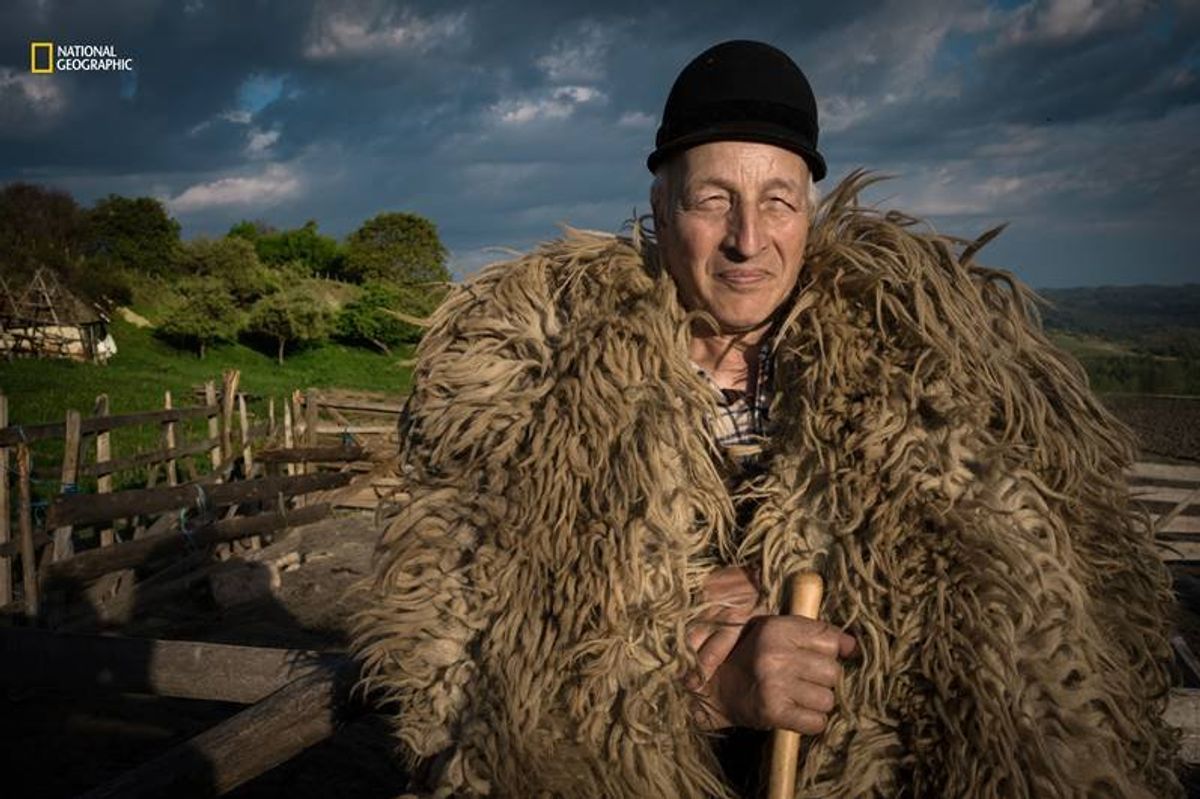Our favorite photos from National Geographic's stunning 2024 'Pictures of the Year' issue
National Geographic never disappoints.

Romanian sheepherder Constantin Dăncilă.
National Geographic released its Pictures of the Year issue, highlighting the 20 best images Nat Geo photographers took in 2024. This year's shots were narrowed down from over 2.3 million photos, 300,000 more than in 2023. They're an eye-opening and thought-provoking glimse into the animal kingdom, various cultures and scientific innovation.
“A compendium of the best recent work from National Geographic’s photographers in the field, Pictures of the Year is an annual highlight of our editorial calendar. This year’s selection is timeless and timely,” said Nathan Lump, Editor-in-Chief of National Geographic. “Our 2024 photos are visually captivating, to be sure, but they also bring to life the urgent challenges facing us as well as the ingenuity that’s been sparked in meeting them – from an effort to save rhinos to advances in green technology to adaptations in animal behavior. We hope that these images will stop audiences in their tracks and inspire them to learn more.”
Here are some of our favorite photos. Visit National Geographic to see all 20 of 2024's Pictures of the Year.

1. "A Boom with a View" (Antigua, Guatemala) by Peter Fisher
Fuego Volcano has been erupting continually since 2002. A one-day hike up its dormant twin, Acatenango and across a valley rewards adventurers with a view from Fuego's ridgeline. Eruptions can occur multiple times a day.

2. Dining at Dusk (Concan, Texas) by Babak Tafreshi
Frio Bat Cave in southern Texas is the spring and summer home of approximately 10 million Mexican free-tailed bats. Most nights around sunset, bats fly out in a coordinated stream to feed primarily on moths. “You think maybe it’ll finish in 10 minutes,” Babak Tafreshi says, but their takeoff “continues for two hours.”

3. A Hope for Rhinos (Nanyuki, Kenya) by Ami Vitale
A scientist holds the 70-day-old fetus of a rhino conceived through in vitro fertilization

4. Tiny Breakthrough (Konstanz, Germany) by Ingo Arndt
Ingo Arndt worked with the University of Konstanz to build a nest to observe the breeding behavior of wood ants, typically hidden in forest mounds. Arndt watched female colony workers clean eggs, larvae spin cocoons and hatchlings, like this one, open cocoons with their mandibles before workers helped cut them out.

5. Shepherding Change (Coceneşti, Romania) by Jasper Doest
Intimately familiar with the land his family has worked for a century, Constantin Dăncilă, in a traditional sheepskin coat, has seen significant changes in the environment, prompting him to adapt his farming practices. With less snow in winter to supply streams, grass in the valley has become scarce, so he drives his flock higher into the alpine meadows.

6. Taking the Plunge (Atka Bay, Antarctica) by Bertie Gregory
A young emperor penguin jumps off a 50-foot cliff for its first swim. The species normally breeds on low-lying sea ice, but some colonies have been found on higher and more permanent ice shelves, behavior likely to become increasingly common with climate change. Left by their parents a month earlier, the chicks must fend for themselves and find food by hunting in the sea.

7. A Forever Home (Benson, Arizona) by Christie Hemm Klok
Macaws are highly social birds that live an average of 40 to 60 years and often exhibit stressed behavior in captivity. This makes them challenging pets, so many end up in the Oasis Sanctuary, which provides permanent care for 800 parrots, including macaws. Here, Janet Trumbule, who runs the refuge, tries to coax them down with walnuts, a favorite food.

For more on this story, visit NatGeo.com/Photos.



 Worried mother and children during the Great Depression era. Photo by Dorthea Lange via Library of Congress
Worried mother and children during the Great Depression era. Photo by Dorthea Lange via Library of Congress  A mother reflects with her children during the Great Depression. Photo by Dorthea Lange via Library of Congress
A mother reflects with her children during the Great Depression. Photo by Dorthea Lange via Library of Congress  Families on the move suffered enormous hardships during The Great Depression.Photo by Dorthea Lange via Library of Congress
Families on the move suffered enormous hardships during The Great Depression.Photo by Dorthea Lange via Library of Congress

 Millennial mom struggles to organize her son's room.Image via Canva/fotostorm
Millennial mom struggles to organize her son's room.Image via Canva/fotostorm Boomer grandparents have a video call with grandkids.Image via Canva/Tima Miroshnichenko
Boomer grandparents have a video call with grandkids.Image via Canva/Tima Miroshnichenko
 Classic Film GIF
Classic Film GIF  Oh nothing, just Edyth, Arthur, and Iris hanging out at the park.
Oh nothing, just Edyth, Arthur, and Iris hanging out at the park.
 It helps that Golden Retrievers are notoriously friendly. Photo by
It helps that Golden Retrievers are notoriously friendly. Photo by